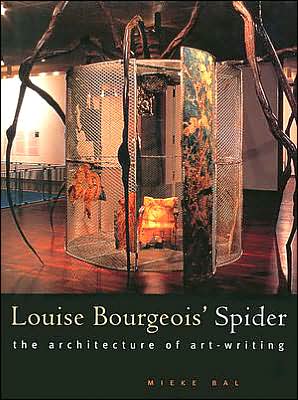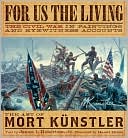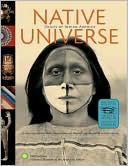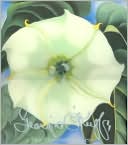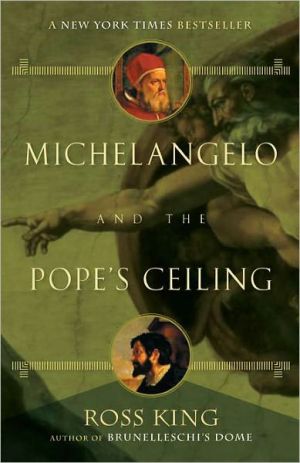Louise Bourgeois' Spider: The Architecture of Art-Writing
The sculptor Louise Bourgeois is best known for her monumental abstract sculptures, one of the most striking of which is the installation Spider (1997). Too vast in scale to be viewed all at once, this elusive structure resists simple narration. It fits both no genre and all of them—architecture, sculpture, installation. Its contents and associations evoke social issues without being reducible to any one of them. Here, literary critic and theorist Mieke Bal presents the work as a theoretical...
Search in google:
The sculptor Louise Bourgeois is best known for her monumental abstract sculptures, one of the most striking of which is the installation Spider (1997). Too vast in scale to be viewed all at once, this elusive structure resists simple narration. It fits both no genre and all of them—architecture, sculpture, installation. Its contents and associations evoke social issues without being reducible to any one of them. Here, literary critic and theorist Mieke Bal presents the work as a theoretical object, one that can teach us how to think, speak, and write about art. Known for her commentary on the issue of temporality in art, Bal argues that art must be understood in relationship to the present time of viewing as opposed to the less-immediate contexts of what has preceded the viewing, such as the historical past of influences and art movements, biography and interpretation. In ten short chapters, or "takes," Bal demonstrates that the closer the engagement with the work of art, the more adequate the result of the analysis. She also confronts issues of biography and autobiography—key themes in Bourgeois's work—and evaluates the consequences of "ahistorical" experiences for art criticism, drawing on diverse sources such as Bernini and Benjamin, Homer and Eisenstein.This short, beautiful book offers both a theoretical model for analyzing art "out of context" and a meditation on a key work by one of the most engaging artists of our era.Library JournalDespite its reasonable cost, beautiful appearance, and thesis that "art must be understood in relationship to the present time of viewing," Louise Bourgeois' Spider is disappointing. In an attempt to elucidate Bourgeois's (1911-) 1997 masterpiece, "The Spider," this highly technical book sets methodological interpretive barriers between the viewer and the sculpture. As a result, this volume may be of interest to specialized libraries but is not suitable for general collections serving readers wishing to acquaint themselves with the wonders of Bourgeois's art. Readers should instead see the article Bal (literature, Univ. of Amsterdam and Cornell Univ.) contributed to Louise Bourgeois: Memory and Architecture (LJ 3/1/01). Copyright 2001 Cahners Business Information.
List of FiguresPreface1Entrance12Description Shipwrecked93Narrative and Its Discontents314Refocusing Attention515Cement of Cellular Stories616Tales of Mother Spider717Fragmented Bodies778Beckoning Bernini879Passages through Modern Sculpture10710Hyperbole as Wink117Bibliography127
\ Common Knowledge - Wayne Anderson\ \ “No critic that I’ve read . . . has embraced Bourgeois’s Spider more closely than Bal, who gets behind her work, all around it, and through it, exhausting all permutations. Her essay is intellectual adventuring into a dense thicket of what’s possible, when knowable unknowns are forced into being known and secrets induced to tattle on themselves. Tag along with her, try to keep up, forewarned that from where she is headed there may be no way back.”\ \ \ \ \ London Review of Books - Linda Nochlin\ “In a way, Bal is the ideal writer about Bourgeois: in both, excess is the name of the game. Bal’s stylistic exuberance may at times be maddening and self-indulgent, but at others it is invigorating and revelatory. In the same way that much of Bourgeois’s work can be read as a not so subtle attack on the verities of sculptural Modernism, so Bal’s discourse can be understood as a continuous and often salutary thrust against establishment art history.”\ \ \ Feminist Academic Press“Here, literary critic and theorist Mieke Bal presents the work [“Spider”] as a theoretical object, one that can teach us how to think, speak, and write about art.”--Feminist Academic Press\ \ \ \ \ Library JournalDespite its reasonable cost, beautiful appearance, and thesis that "art must be understood in relationship to the present time of viewing," Louise Bourgeois' Spider is disappointing. In an attempt to elucidate Bourgeois's (1911-) 1997 masterpiece, "The Spider," this highly technical book sets methodological interpretive barriers between the viewer and the sculpture. As a result, this volume may be of interest to specialized libraries but is not suitable for general collections serving readers wishing to acquaint themselves with the wonders of Bourgeois's art. Readers should instead see the article Bal (literature, Univ. of Amsterdam and Cornell Univ.) contributed to Louise Bourgeois: Memory and Architecture (LJ 3/1/01). Copyright 2001 Cahners Business Information.\ \
